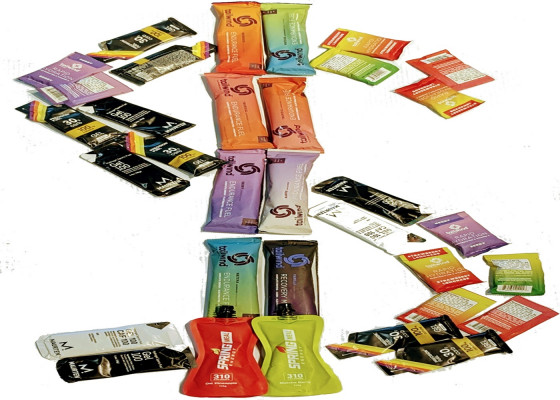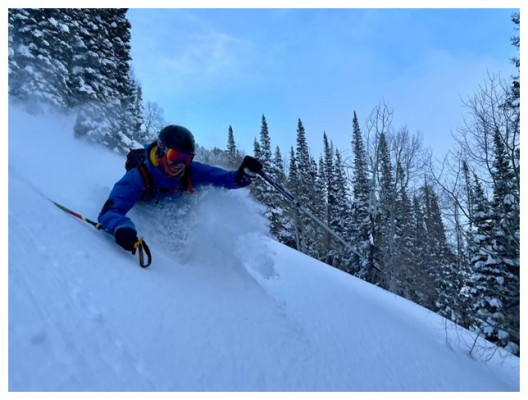9/24/2024 Telemo Co: Telemark Skiing for the Backcountry
Once upon a time, leather boots and telemark bindings were the only efficient way to ski in the backcountry. This beloved discipline started to fall by the wayside due to innovations in alpine touring (A/T) boots and bindings in recent years and a falling investment in telemark gear. For the 24/25 season, companies big and small have turned their gaze back to telemark skiing, promising to breathe new life into this small but proud faction of the ski industry.
Perhaps making the most important leap in telemark technology in recent memory, SCARPA has released their new iteration of the TX Pro, which (finally) offers many of the same benefits of contemporary alpine touring boots. With boots finally worthy of our shelves and your feet, we feel there is no better time to offer a curation of products that allow our telemark friends to efficiently experience the skintrack and enjoy their ever-soulful turns.
Boots
So, what's so good about the TX Pro 2.0? Frankly, to quote Elrond from The Lord of the Rings, “You have but one choice...” regarding telemark boots for backcountry skiing. While some manufacturers offer telemark boots with tech toe inserts, when it comes to weight and climbing efficiency, these options are more akin to touring boots from 20 years ago. With brick-like weights and a restrictive range of motion, these boots are the antithesis of a modern, efficient, and svelte boot.
The new TX Pro breaks free from these restrictive shackles. With 62 degrees of cuff articulation in walk mode, your ankles will be treated to a delicious range of motion comparable to some of our lighter touring boots. While the drastically improved ROM is enough reason to be excited, SCARPA also slashed the weight of the TX Pro, allowing you to move with greater efficiency. With these improvements, SCARPA has delivered an offering unlike anything ever released for the free-heeling community. With an NTN sole and tech inserts at the toe, the TX Pro 2.0 is compatible with all NTN and telemark-tech bindings available on the market.
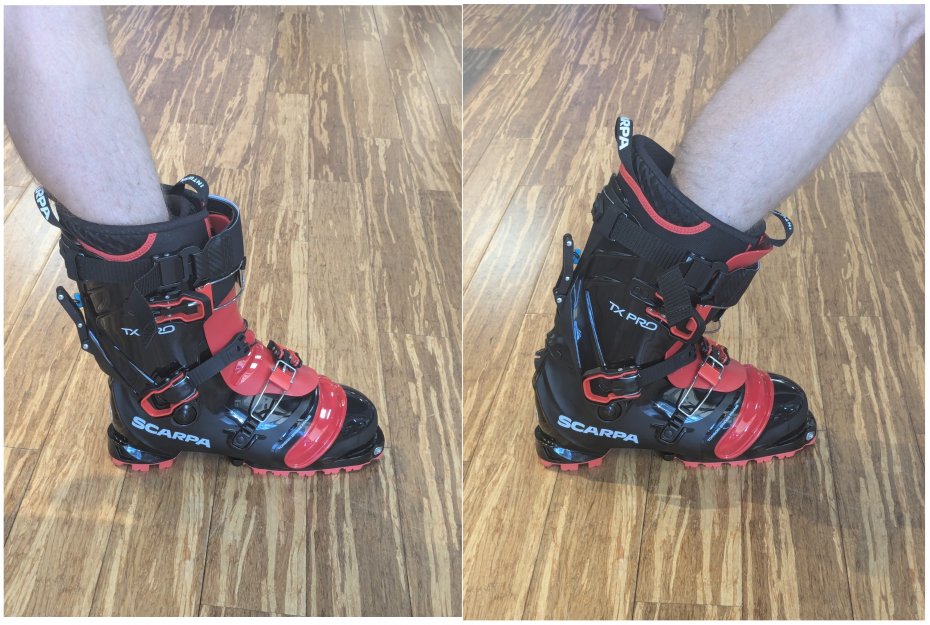
Bindings
Unlike telemark boots, telemark bindings have seen much innovation in the last decade. In the early 2010s, Salt Lake’s own Mark Lengel unveiled the first-ever Telemark Tech System (TTS) – a telemark cable binding that utilized a Dynafit-style tech toe for free-pivot touring. While offering an unencumbered (efficient) touring experience, this design has perhaps the best combination of weight and performance of any telemark binding, making it an excellent option for the backcountry.
With roots planted deep in the Wasatch Mountains, Voile has a long history of devotion to telemark and backcountry skiing, which can be seen in its vast assortment of backcountry-specific products. This design prowess is displayed with bindings like the TTS Transit (acquired from Moonlight Mountain Gear), which has subtle but significant design features that set it apart from other designs. While most TTS-style bindings weigh between 450 and 550 grams, only the TTS Transit has implemented a cable system that can be removed for uphill travel, allowing you to cut the weight on your feet nearly in half for long approaches.
The TTS Transit uses a (rebranded) Plum toepiece with multiple locking positions, allowing you to vary the lock-out strength to your needs. Improving upon the Moonlight Mountain Gear design, the TTS Transit has more secure heel lever geometry and specially made ski crampons that utilize Plum’s drop-in crampon interface. Cables can be swapped between three pivot locations without unmounting the binding. This allows you to increase the activity by moving them back or forward for a more traditional feeling of spring engagement. The Voile TTS Transit is a customizable, versatile, and lightweight way to telemark in the backcountry.
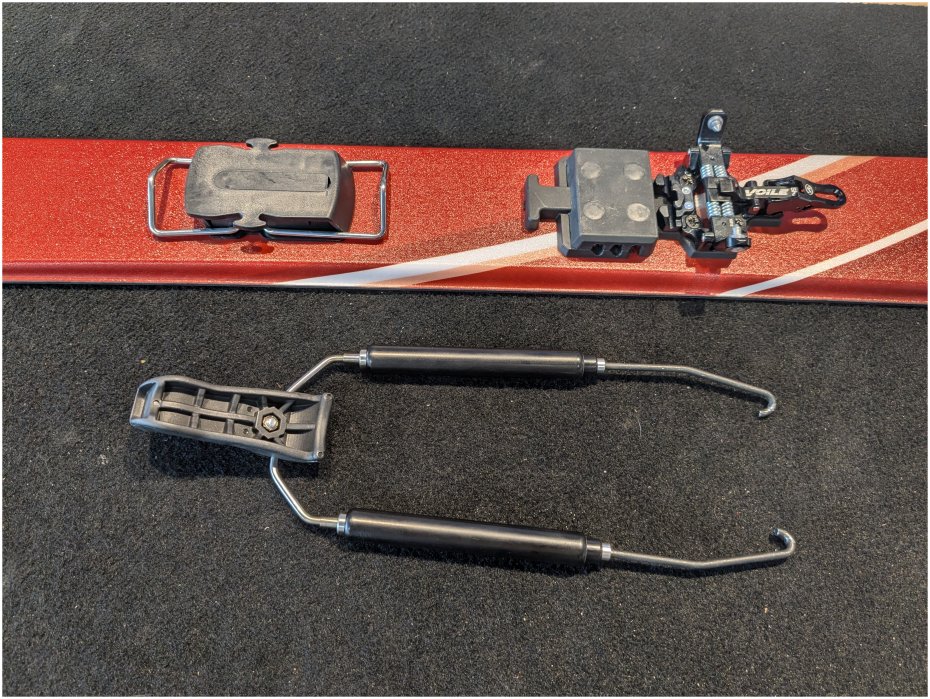
Ski Considerations
From a performance standpoint, picking a backcountry ski for telemark bindings is much the same as selecting one for an A/T setup. Historically, when selecting skis, it was common to choose a longer length and mount them farther back to prevent the tip of the rear ski from diving under the snow. Thankfully, modern ski construction yields dynamic flex patterns where the ski tip flexes softer than underfoot, allowing you to select a ski that matches your length and ski-characteristic preferences.
While you can mount most resort skis with telemark bindings, the same cannot be said of lighter backcountry skis. A telemark binding places increased strain on a ski's mounting plate, which necessitates careful consideration of a ski's material makeup when deciding upon a ski.
Most backcountry skis are made with either poplar or paulownia (Karuba) wood to help keep weight down. Paulownia wood is lighter but less dense than poplar, making poplar and other woods more ideal for telemark bindings. However, paulownia can still be used with proper mounting reinforcement built into the ski.
Mounting reinforcement, or mounting plates, refers to the area of the ski with an extra layer of material such as Titanal, fiberglass, or denser/stronger woods, like ash or maple, to improve the holding power of the binding screws. To keep weight down, many backcountry manufacturers strategically shape their mounting plates to save weight.
This strategic shaping can be problematic because telemark bindings have longer toe patterns than most A/T bindings, giving rise to the possibility of the rearmost toe mounting holes landing outside the toe mounting plate. This can increase the risk of binding pull-out because the rear mounting holes generally experience the most upward force from the binding. Furthermore, smaller boot sizes will be more prone to "running out" of mounting plate.
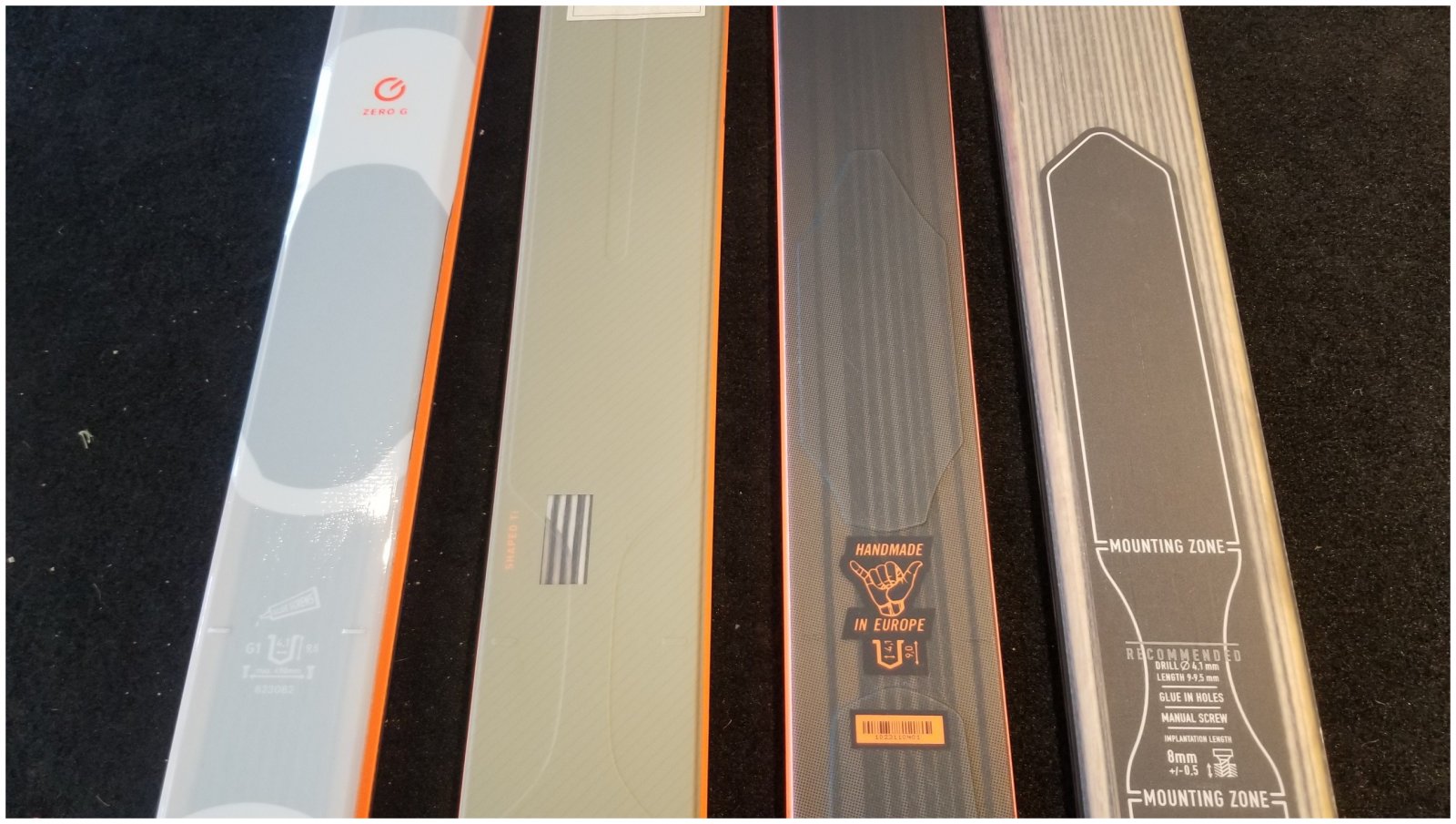
How do you tell where the mounting reinforcement is on a ski? Well, some skis make it a lot easier than others. If part of the topsheet is raised under where the binding will go, that usually indicates the boundary of reinforcement. Skis that don't have as apparent of an indicator will usually denote where the mounting areas are either via explicit instruction or with unlabeled shaded shapes.
At Skimo Co, we have jigs for both Voile TTS Transit bindings and 22 Designs, so if you have a question about whether your binding/BSL combination will fit within the boundaries of a ski's mounting plate, please contact us.
As always, please let us know if you have questions or need help creating a setup that works for your individualized needs. We will see you in the hills!
Comments
